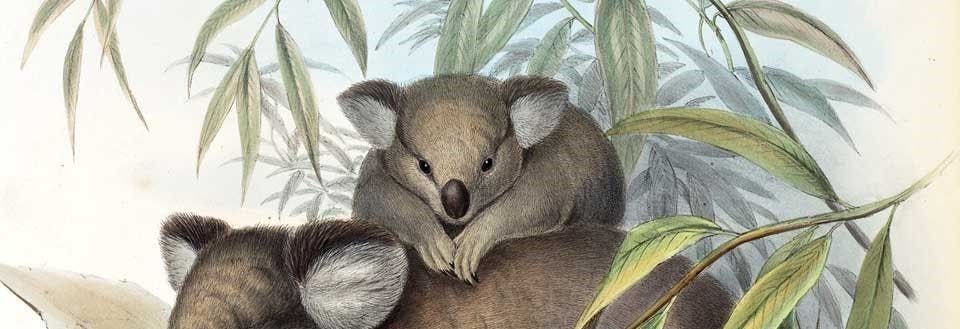Darwin, Charles (1809-1882).
The Zoology of the Voyage of the H.M.S. Beagle. London: Published by Smith, Elder and Co., 1839-1843.
When he returned from the Beagle voyage, Darwin sent many of his specimens out to experts. He sent his bird collection to John Gould, the mammals to George Waterhouse, the reptiles to Thomas Bell, the fish to Leonard Jenyns, and the fossil mammals to Richard Owen. When they had finished their descriptions of the specimens, Darwin prepared their texts and illustrations for publication. The result was the five-volume Zoology of the Beagle, which appeared between 1839 and 1843.
John Gould was a good choice to examine the birds, as he was just finishing his monumental Birds of Europe (see item 32) and was about to head off to Australia. It was Gould who discovered that many of the birds that Darwin collected in the Galapagos Islands were unique species of finches---thirteen of them in all, found nowhere else in the world. Darwin would later explain this as the result of random migration and geographic isolation, but at the time, he was quite surprised. A number of the finches, and many other birds, were illustrated by John Gould’s wife, Elizabeth, including this pair of cactus finches.
One of the unusual features of the Galapagos was the absence of any native terrestrial mammals (although they do have bats). Instead, the dominant animals were two species of iguana. The marine iguana swims, feeds on seaweed, and basks on the rocks, and is unlike any other iguana in the world. The land iguana, also a unique species, feeds on cactus. Darwin would later discover that most island groups that are far from continents similarly lack mammals, and often have marine reptiles, and an assortment of endemic birds, although they are quite different from the Galapagos fauna. The land iguana depicted here was drawn by Benjamin Waterhouse Hawkins, who was a gifted illustrator, but more famous for his role in erecting the first full-size dinosaur restorations in Sydenham Park, London, in 1854 (see item 45).
Darwin’s experience with fossils began quite unexpectedly in 1833, when he stumbled on some bones eroding from a bank in Punta Alta, Argentina, south of Buenos Aires. This proved to be quite a cache, and he eventually recovered the partial remains of ten individual mammals. Several he recognized as Megatherium, since he was familiar with Cuvier’s account of this extinct ground sloth (see item 41). The others were unfamiliar, and so he turned them over to Richard Owen, who was an extremely competent young authority on comparative anatomy and fossils, and the apparent heir to Cuvier. Owen discovered that all Darwin’s specimens were the remains of extinct animals, several of them new to science.
One of the fossils brought back was a large skull, almost four feet long, that Owen named Toxodon, and described it as a hippo-like animal, with no modern descendants. The published lithograph of this skull was drawn by George Scharf and was done natural size. We reproduce it here, but the plate is four feet long and too large to display. Fortunately, Scharf did a drawing of the other side of the skull, at 1-to-4 scale, and that is what we show in the exhibition.
The fossil mammals Darwin discovered led to one of his first original contributions to zoology. He noted that when one finds an extinct animal in a locale, such as the Megatherium in South America, there is usually a living animal in that region that it resembles (such as the sloth). Thus there seems to be a kind of “succession of types,” as if there were a line of descent that connects the extinct and living species. Cuvier had earlier denied that there is any connection between species of different eras. Darwin now thinks otherwise.

